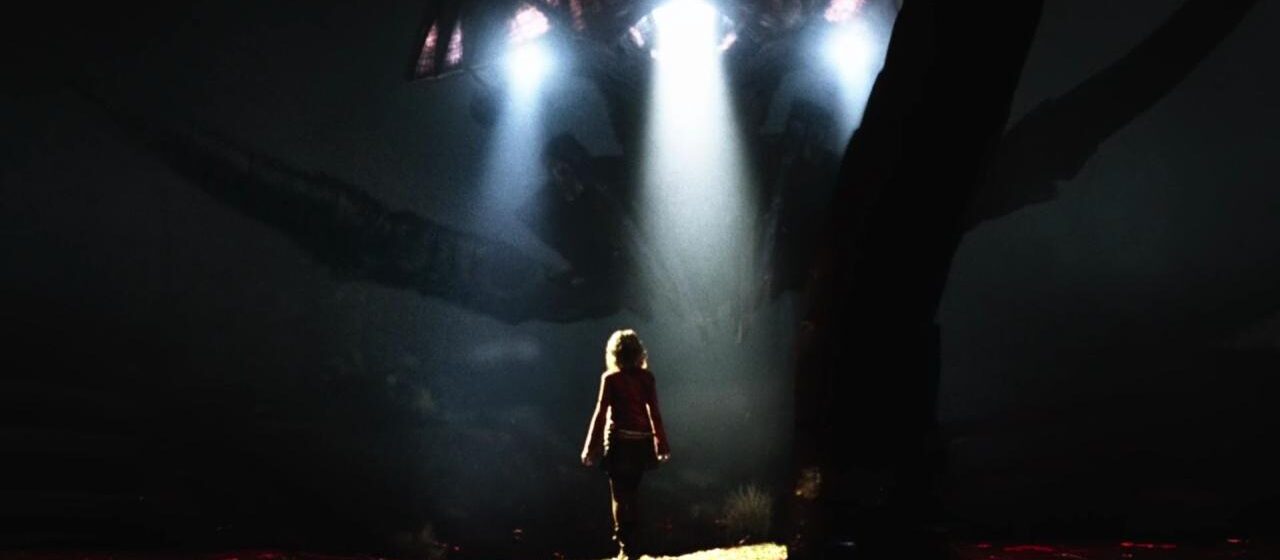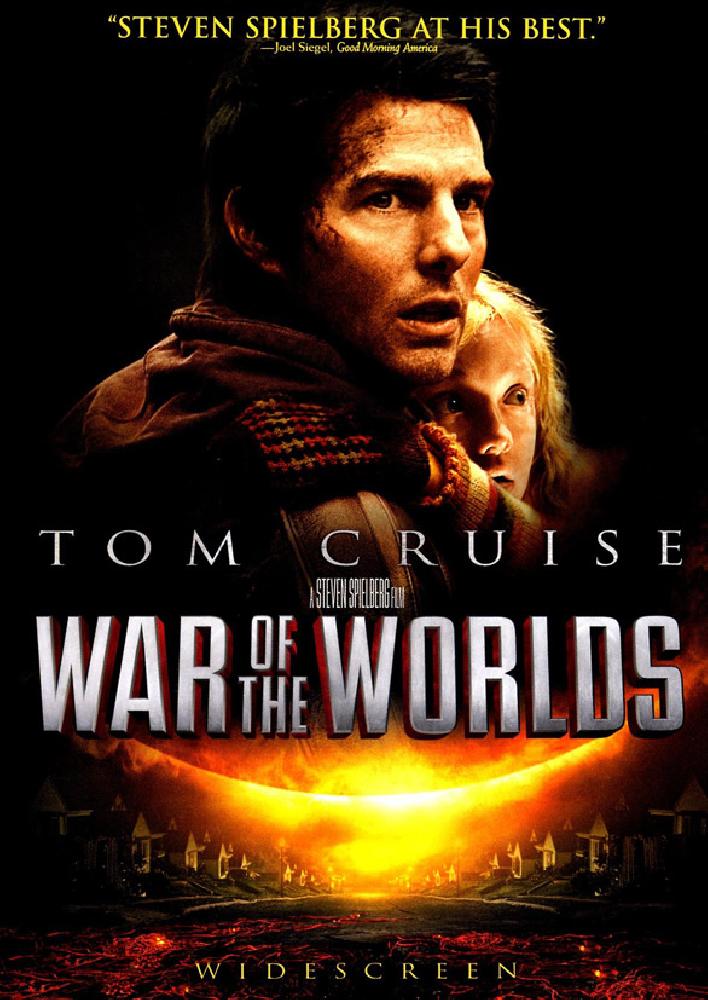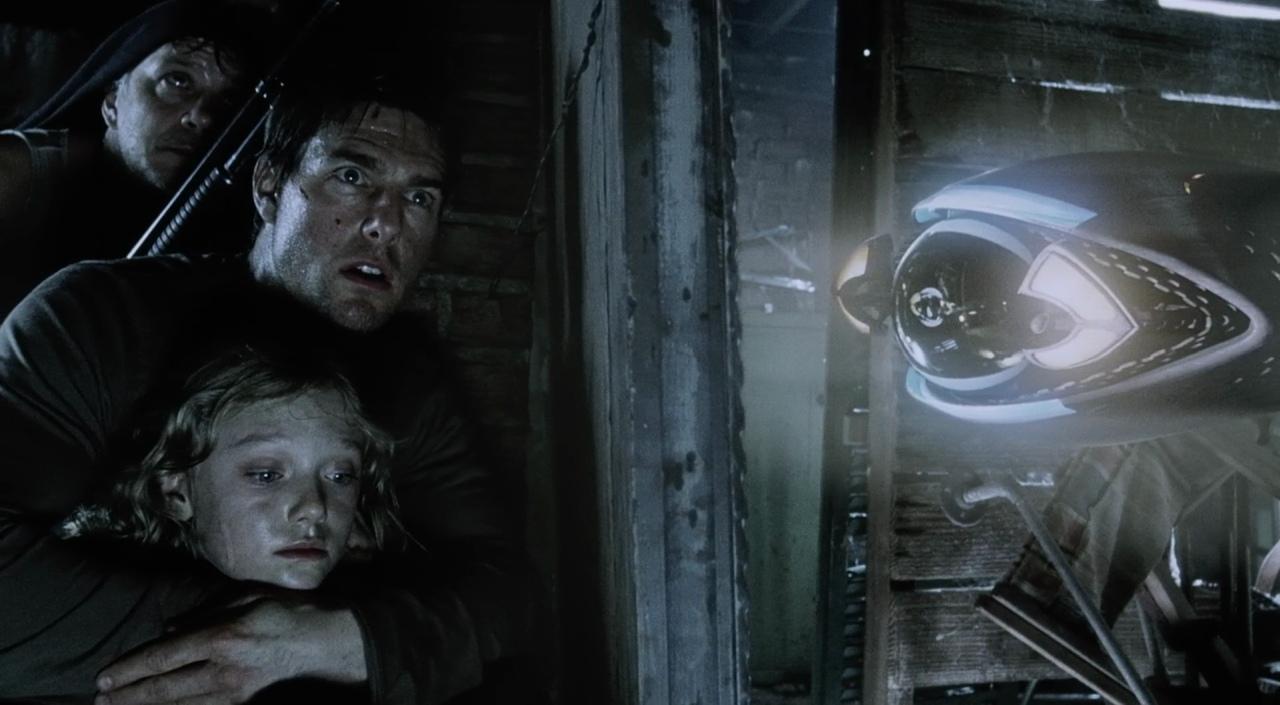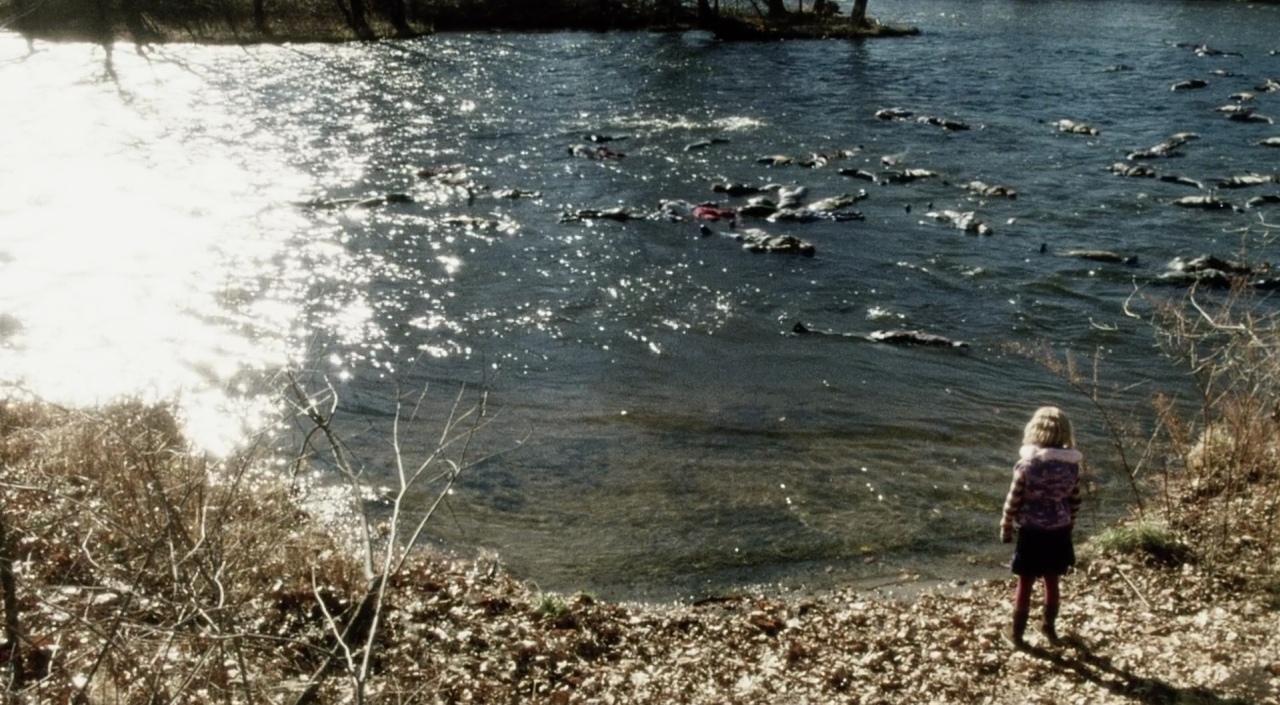

“By the toll of a billion deaths, man had earned his immunity, his right to survive among this planet’s infinite organisms. And that right is ours against all challenges. For neither do men live nor die in vain.”
Based on H.G. Wells classic novel The War of the Worlds, Steven Spielberg’s modernized adaptation is a non-stop series of action sequences featuring Tom Cruise in the leading role. While it hits the expected dramatic beats and is visually appealing, it struggles to provide anything that gives it staying power. Its breathless pace gives little space for exploring the nature of the invaders and instead relies on set pieces and imagery to capture the imagination. Its bleak view of human-alien interaction stands in stark contrast to the director’s previous sci-efforts such as Close Encounters of the Third Kind and E.T. the Extra-Terrestrial.
The film’s plot is kind of clunky and never really explains itself. As the aliens ride strikes of lightning down into the ground in order to pilot an army of buried mechanized tripods, we’re told that “they’ve been planning this for millions of years,” but there is little explanation of exactly what they’ve been planning. Once the protagonists lose their bearings, they spend the rest of the film simply trying to stay alive. No one really solves the problem, and then the invasion is stopped miraculously (yes, the film ends much in the same way that the novel does; but it’s barely explained by a voiceover from Morgan Freeman in the film).
The film begins as Ray Ferrier (Cruise) returns from his shift as a longshoreman, and his ex-wife (Miranda Otto) drops their children off at his house. A quick survey of his home reveals that he is not much of a father to his two children, Robbie (Justin Chatwin) and Rachel (Dakota Fanning), and that the ensuing chaos will be a chance for him to redeem himself in the eyes of his kids. He is shaken by the events as they unfold, clearly uncertain about how to handle the situation. At one point, Rachel even asks Robbie, “Whose gonna take care of me if you go?”

Very soon after the children arrive, a bizarre lightning storm rips through the neighborhood, powering down all electronic devices.1 When Ray and other residents gather around a hole in the middle of the town square, the pavement begins to ripple and crack. A massive war machine emerges from the ground, firing lasers that disintegrate the fleeing herd of people. Ray returns to his home and gathers a few belongings in only a few minutes then steals the only functioning vehicle in town. They begin traveling toward Boston, but constantly encounter more tripods. There are plenty of moments of “why don’t they try…?” or “now what are the chances of that happening?” For example, there is a scene where hundreds of people are fleeing down a ridgeline that is being held by a line of soldiers with orders to sacrifice themselves so that the civilians can be evacuated. But why were hundreds of civilians just hanging out on the ridge? And they’re not being evacuated, they’re just running down the hill to be slaughtered on the other side. As this mass of people come thundering down the hill and the tripods cut through the line of soldiers, Harlan Ogilvy (Tim Robbins) waves Ray and Rachel (out of hundreds of people) into his basement.2
Probes from the machines snake their way through the basement and eventually the alien creatures themselves come to explore. Harlan goes crazy and Ray is forced to take him out. As we’re on the ground with our protagonists, and are never given any concrete explanation outside of Morgan Freeman’s omniscient narration that opens and closes the film, it is unclear exactly what the aliens are doing with the human population. It appears that they are plucking them from the ground, processing them inside the tripods, and then using their liquified remains to fertilize some sort of plant growth that begins to cover the earth. It sounds gross but looks pretty cool; it is a bit disappointing it isn’t explored further. The tripods follow the design of the novel and Orson Welles 1938 radio adaptation. Their retro design clashes with the modern setting, and so the menace isn’t quite as terrifying as it would have been a hundred years ago. They ultimately are taken down not by military might or clever tactics, but by microbial life forms that their biological systems were unprepared for.3

Although the alien technology appears underwhelming, there are some solid effects, such as the wreckage of an airplane that Ray wanders through while others scavenge for supplies, the raised freeway toppling and dumping vehicles as the family flees in their stolen van, and a train that rips through a station while on fire. The alien creatures themselves are also kind of anti-climactic, their mannerisms more curious than their malevolence would have suggested. It would have been more effective to abstain from revealing the physical specimens of the aliens à la 2001: A Space Odyssey.
There were several atypical narrative decisions that I enjoyed; namely, that the film is incredibly limited in scope and our main character is not a hero. Many films of this nature, such as Independence Day or Arrival give the viewer a global view of the invasion. But War of the Worlds keeps us focused on just the main character and his family. We only know what they know, without any filter to tell us which theories are correct. It feels very similar to the found footage genre which has grown in popularity with films like Cloverfield. There are no scenes of famous landmarks being toppled or the President being evacuated to safety. The flaw here is that the film’s title and marketing led audiences to believe that its scope would be larger than it actually is.
The film was expected to be a big earner, with Hollywood’s most popular director and actor teaming up again after Minority Report. However, prior to the film’s release, Tom Cruise’s infamous couch-jumping appearance on Oprah kind of derailed the whole thing. But sci-fi films from top directors don’t come along every day, and they cost a lot of money to make, so I’m happy to sit through second-rate Spielberg films any day. Although it feels a bit unsatisfying once you realize much of the film is visually appealing high energy fluff, its family dynamics and stellar performances (especially Cruise and Fanning) elevate it above a simple visual spectacle.
1. There is a really cool shot shortly after the EMP of a man recording one of the alien machines on his camcorder. He drops it and then the frame moves in to show the machine wreaking havoc on the camcorder screen. But, um, there was an EMP and all other electronic devices have stopped working.
2. For some unexplained reason, Robbie feels the need to fight, although he has no weapon and no training. He basically forces Ray to abandon him. It’s dumb and feels like silly way to get Robbie out of the story. “I need to be here. I want to see this.” There are bullets whizzing through the air, tanks firing, and helicopters overhead, but an unarmed civilian needs be there. Cheese.
3. Let’s not get into arguing the thought processes of aliens. But just to indulge for a moment: if they had the technology to bury war machines on our planet in order to harvest our species millions of years in the future, you’d think they would have been able to bring some cold medicine with them when they finally returned.